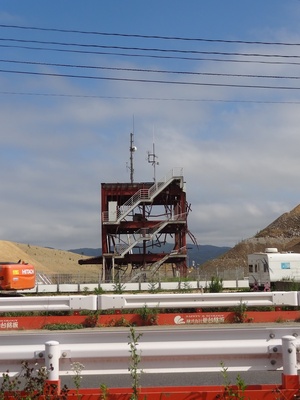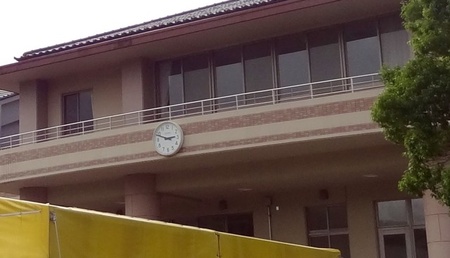On my last day in Minamisanriku, a small group of us from World in Tohoku signed up for a tour of the town’s downtown coastal area, which was decimated by the earthquake and tsunami of March 11, 2011.
Until then we had been immersed in brainstorming ways to grow the organizations of a group of dedicated and inspiring social entrepreneurs. They were so positive, and so alive that it was hard to viscerally grasp the scope of the natural disaster that had spawned some of their ventures. I wanted to learn more about the effects of the disaster that left nearly 22,000 dead or missing and see with my own eyes the state of the ongoing reconstruction.
I had read accounts of the tsunami in which survivors described seeing “a white line” far out on the bay, which moments later had transformed into a giant wall of destruction rushing toward them. What had that deadly wave, rising at points as high as 30 feet, wrought, and what was being built in its place?
Our guide, Kudo-san, met us at the the community center where our retreat was held, and started with a wrenching video and overview of what had happened. A former insurance company worker, Kudo-san, 44, told us that he considers himself lucky: he, his wife, and four children were all spared when over 1,200 other townspeople were not.
He and his family are among the 9,746 evacuees from Minamisanriku, and the close to 3,100 who are still in temporary housing. Yet that didn’t matter because his family was intact, unlike so many others.
Located over 90 miles from coastal Fukushima, the site of the nuclear reactor meltdown, Minamisanriku’s fisheries, shellfish beds, and seaweed harvesting are on their way to recovery, thanks to government and public support and the way the fishermen have banded together to share equipment and support each other.
Kudo-san then drove us to the former town center, still a giant construction site dotted with cranes, giant mounds of dirt from the construction of a new levee, hard-hatted construction workers and their vehicles. Before us was a shrine centered on a mournful-looking Jizo Bodhisattva as well as offerings of flower bouquets and bottles of sake, beer, and tea for those who had perished.
Directly beyond the road that bisected the construction zone stood the rust-colored skeleton of a building, the city’s former Disaster Prevention Center. When the tsunami warning sounded, Kudo-san told us he saw workers at the nearby town hall flee to the three-story building, but he decided that it would be wiser to get to higher ground. He made the right decision; of the 50 or so town hall employees who reached the rooftop, only 10 survived when the tsunami tore through it. Among those who survived was the town’s mayor, and among the dead was Miki Endo, 25, a Disaster Prevention Center employee who heroically continued to broadcast tsunami warnings over the town’s loudspeaker system until she was swept away by the tsunami.
A bitter reminder to townspeople of the losses their families suffered, they would like to see the scaffolding torn down, Kudo-san told us. The Miyagi Prefectural government has a different view; it would like to keep the building’s shell standing as a memorial and reminder of what happened. For now, the arrangement is that the prefectural government will maintain the building for 20 years and then its fate will be decided.
Next we traveled to the high ground above the town where three of its public schools are located. At one school, the clock was frozen at 2:48 p.m., the moment the magnitude 9.0 quake reached Minamisanriku. This was one of the town’s designated shelter spots, and preparations were underway for the next day’s graduation ceremony. Kudo-san told us that a teacher and a student walked to the edge of the hilltop school grounds where we stood to watch the approaching tsunami from what they thought was a safe spot. It wasn’t though; because of the coastal geography, part of the tsunami squeezed around the town and slammed into them from behind, killing both of them.
A good number of townspeople, lulled into complacency by the frequency of earthquake alerts and the much smaller but overhyped 2010 tsunami that resulted from an earthquake in Chile, did not respond quickly enough to warnings and were lost. But Kudo-san says that everyone now realizes “the importance of over-estimating, of assuming the worst.”
Amid this barrage of overwhelmingly sad detail, Kudo-san seemed to want to impart a last, happier image. He remembered the irony of being surrounded by water, and yet not having enough of it. There was no electricity in the immediate aftermath, of course, but the water shortage was much more acutely felt. “For a family of four, we only got two buckets per day,” he told us. The happy part was that every four days he got to take a bath at the hot springs of the nearby Kanyo resort hotel, which had been spared damage. “Those were our happiest moments,” he said.
*This article was originally published on Walking and Talking on September 2, 2016.
© 2016 Nancy Matsumoto











